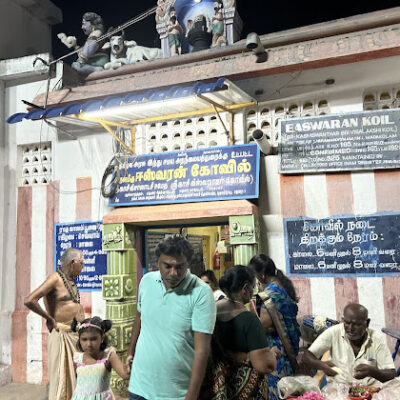Wat Phra Si Sanphet Buddhist Temple, Thailand

Address
Wat Phra Si Sanphet Buddhist Temple, Thailand
Tambon Pratuchai, Phra Nakhon Si Ayutthaya District,
Phra Nakhon Si Ayutthaya 13000, Thailand
Moolavar
Buddha
Introduction
Wat Phra Si Sanphet is the Buddhist temple on the site of the old Royal Palace in Thailand’s ancient capital of Ayutthaya until the city was completely destroyed by the Burmese in 1767, during the Burmese–Siamese War. It was the grandest and most beautiful temple in the capital and it served as a model for Wat Phra Kaew in Bangkok.
Puranic Significance
In 1350 U-thong, also known as King Ramathibodi I, ordered the construction of a royal palace in the same area that Wat Pra Si Sanphet stands today. The palace was completed in 1351 and King Ramathibodi established Ayutthaya as the capital of his Kingdom. The palace contained three wooden buildings named “Phaithun Maha Prasat”, “Phaichayon Maha Prasat”, and “Aisawan Maha Prasat”. In 1448 King Borommatrailokkanat built a new palace to the north and converted the old palace grounds to be a holy site. His son, King Ramathibodi II added two Stupa, which in Thailand are known as Chedis, built in 1492.
In 1742, under King Borommakot, the temple was again renovated. Unfortunately, the city of Ayutthaya, including the temple compounds, was completely destroyed in the Burmese invasion in 1767, with the exception of the three Chedis that can be seen today.
Special Features
In its final stage before its destruction the temple was an impressive structure. Additional facilities were located on a raised platform, the three Chedis, which are today the only buildings which have been restored. All other the foundations are still preserved.
The Chedi is built in the classic, Ceylonese design that is reminiscent of a bell. In every direction small chapels are recognized, which lead to steep stairs. The roofs of the chapels are in turn topped with a miniature Chedi. Each of the three Chedis is on the eastern side assigned a Mondop where Buddha’s footsteps are believed to be.
The terrace of the Chedi with Mondop was surrounded by a cloister (Phra Rabieng), in each case a hall was built in the west and in the east, an arrangement as can be seen in many temples in the country today. The building in the West actually consisted of four individual viharn, which were arranged in a cross shape to a Mondop around. The building to the east was the viharn Luang, the biggest building of the temple. In it stood the statue of Phra Si Sanphet Phuttha, which gave the name to the temple.
Symmetrically around the viharn Luang were grouped four other halls. North was a viharn which was a bit smaller than the viharn Luang, yet large enough to accommodate the more than 10 m high statue of Phra Phuttha Lokanat. East front was the Phra Chom Thong Tinang Throne Hall.
Symmetrically, stood south of the viharn of Luang viharn Pa Le Lei, in which probably was a seated Buddha statue.
Around the entire complex there drew a high perimeter wall, four gates passages in the four directions offered access to the temple. Inside along the wall were alternately small Chedis and low pavilions (Sala). Of these small Chedis, some have remained to this day.









Century/Period
1350
Managed By
UNESCO World Heritage Site
Nearest Bus Station
Phra Nakhon, Ayutthaya
Nearest Railway Station
Ayutthaya
Nearest Airport
Don Mueang International Airport









